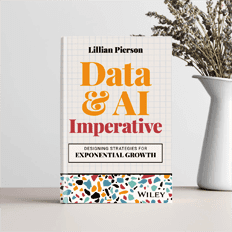Data science is transforming marketing attribution, making it smarter and more accurate. Here’s what you need to know:
- What is Marketing Attribution? It assigns credit to different touchpoints in a customer’s journey, helping businesses understand which channels drive conversions.
- How Data Science Helps: Machine learning analyzes customer behavior, assigns value to touchpoints, predicts campaign performance, and optimizes budgets in real time.
- Key Benefits for Businesses:
- Lower costs by focusing on effective channels.
- Scale growth with data-backed decisions.
- Accurately track revenue contributions from marketing efforts.
- Modern Techniques: Multi-touch attribution, machine learning, and predictive models are reshaping how businesses track and improve marketing success.
Takeaway: With data science, marketing attribution is no longer guesswork. It’s a data-driven approach to understanding and improving your marketing ROI.
Data Science Fundamentals in Attribution
Attribution Data Sources
Marketing attribution in data science combines various data sources to create a clear picture of customer interactions. Here are the three main categories that form the backbone of attribution modeling:
| Data Type | Description | Key Metrics |
|---|---|---|
| Customer Journey Data | Tracks digital touchpoints | Page views, click paths, time on site |
| Marketing Analytics | Evaluates campaign performance | CTR, conversion rates, cost per action |
| CRM Integration | Focuses on customer relationships | Purchase history, lifetime value, demographics |
Data Preparation Methods
To ensure attribution models are reliable, data preparation involves three essential steps:
- Data Cleaning: This step involves eliminating duplicates, standardizing data formats, filling in missing values, and fixing timestamp issues.
- Data Integration: Aligns identifiers, synchronizes timestamps, normalizes data scales, and consolidates customer profiles for consistency.
- Data Transformation: Converts raw data into actionable formats through feature engineering, aggregating metrics, creating custom scoring systems, and building time-series data.
Core Analysis Techniques
Attribution modeling relies on three primary analytical approaches:
- Markov Chain Analysis: Evaluates the likelihood of conversions across different paths.
- Regression Modeling: Assesses the influence of individual touchpoints on conversions.
- Survival Analysis: Analyzes patterns related to the time it takes for conversions to occur.
These methods lay the groundwork for diving into advanced attribution models in the upcoming section.
Modern Attribution Models
Multi-Touch Attribution
Modern data analysis has reshaped how businesses track customer interactions across various touchpoints. Multi-touch attribution (MTA) uses advanced algorithms to examine the entire customer journey, from the moment a customer becomes aware of a brand to their final conversion.
Three key elements drive the success of MTA:
| Component | Purpose | Key Advantage |
|---|---|---|
| Journey Mapping | Tracks the sequence of customer interactions | Highlights the most impactful steps in the journey |
| Channel Analysis | Assesses the effectiveness of different channels | Helps allocate marketing budgets more effectively |
| Time Decay | Considers the timing of interactions | Reflects the importance of recent touchpoints |
Machine Learning Applications
Machine learning has brought a new level of sophistication to attribution modeling. These AI-powered systems can process massive datasets, uncovering patterns and connections that might go unnoticed by human analysts.
Some of the most impactful machine learning applications in attribution include:
- Algorithmic Attribution: Uses supervised learning to assign credit to different channels with precision.
- Pattern Recognition: Employs clustering algorithms to identify the most successful conversion paths.
- Anomaly Detection: Flags unusual data patterns that could signal errors in attribution.
These tools are also the foundation for predictive attribution models, which combine insights from past and current data.
Predictive Attribution Models
Predictive attribution is at the forefront of marketing analytics. By blending historical data with real-time insights, these models help forecast customer behavior, enabling marketers to make informed decisions about budget allocation and campaign adjustments.
Implementing predictive attribution involves a clear process:
1. Data Integration
Bring together customer behavior data, campaign performance metrics, and external market trends into a unified system.
2. Model Training
The system continuously refines its accuracy by learning from new data. This involves:
- Identifying patterns
- Grouping similar customer behaviors
- Scoring the likelihood of conversions
3. Real-Time Optimization
These models allow marketers to make immediate changes based on:
- Live performance metrics
- Emerging market trends
- Reactions from specific customer segments
For companies looking to adopt these advanced models, expert guidance is crucial. Partnering with a fractional CMO who has expertise in data science can ensure proper implementation and ongoing management, all while keeping costs manageable.
Building Attribution Systems
Attribution Model Setup
Creating an effective attribution system involves three main steps:
1. Data Collection Infrastructure
Set up a system to gather data from all your channels by:
- Adding tracking parameters
- Implementing user identification methods
- Establishing checkpoints to validate data
- Building pipelines for real-time data flow
2. Model Development Framework
Define key elements like conversion events and attribution windows. Establish baseline metrics and validation protocols to ensure accuracy.
3. Integration Architecture
Connect your attribution model to marketing systems through:
- APIs for seamless platform integration
- Real-time data processing
- Automated reporting tools
- Custom dashboards for easy stakeholder access
Attribution Software Guide
Choosing the right tools is critical for building and maintaining an effective attribution model. Below is a breakdown of the essential software categories:
| Tool Category | Primary Function | Key Features |
|---|---|---|
| Data Collection | Tracks user actions | Custom event tracking, cross-domain tracking, cookie management |
| Data Processing | Prepares data for analysis | Cleaning, standardizing formats, handling missing values |
| Model Building | Calculates attributions | Custom rules, machine learning options, A/B testing capabilities |
| Visualization | Displays results | Interactive dashboards, custom reports, export options |
Even with these tools, challenges related to integration and data accuracy can still occur.
Common Setup Problems
Data Quality Issues
- Enforce strict validation rules
- Automate quality checks
- Schedule regular data audits
Integration Challenges
- Use standardized APIs when possible
- Provide detailed documentation for developers
- Implement error-handling systems to minimize disruptions
Model Accuracy
- Validate models regularly
- Continuously test against baseline metrics
- Retrain models periodically using updated data
The success of your attribution system depends on its ability to adapt to changing business needs while ensuring reliable and consistent measurements.
sbb-itb-e8c8399
Measuring Attribution Success
Attribution Success Metrics
To evaluate how well your attribution model is performing, you need to track both technical and business-focused metrics. Here’s a breakdown:
Technical Metrics:
- Model Accuracy: Compare predictions to actual conversions to gauge precision.
- Data Coverage: Ensure you’re capturing a high percentage of touchpoints.
- Processing Speed: Measure how quickly calculations are performed, especially in real-time scenarios.
- Data Consistency: Monitor error rates and overall data quality.
Business Metrics:
- Channel ROI: Assess the return on investment for each marketing channel.
- Customer Journey Insights: Evaluate the average number of touchpoints leading to a conversion.
- Budget Allocation Efficiency: Check how well spending is optimized across channels.
- Conversion Rate Changes: Compare conversion rates before and after implementing the attribution model.
These metrics create a solid framework for testing and refining your model.
Model Testing Methods
Once you have the right metrics, you can test your model systematically:
1. Holdout Testing
Set aside a portion of your data as a control group. Use this group to compare model predictions against actual results, ensuring accuracy.
2. Cross-Channel Validation
Evaluate how the model performs across various marketing channels. Test consistency in areas like:
- Paid search campaigns
- Social media ads
- Email marketing
- Display ads
3. Time-Series Analysis
Analyze how the model performs over different time periods. This helps you understand its long-term stability and reliability.
After testing, make regular updates to keep the model effective.
Model Updates and Maintenance
Consistent maintenance is key to keeping attribution models accurate and useful. Here’s a quick guide:
| Maintenance Task | Frequency | Key Actions |
|---|---|---|
| Data Quality Checks | Weekly | Validate incoming data and spot anomalies. |
| Model Retraining | Monthly | Update models with new conversion patterns and adjust parameters as needed. |
| Performance Review | Quarterly | Evaluate accuracy metrics and refine parameters. |
| Channel Analysis | Bi-annually | Reassess channel weights and update attribution rules. |
Steps for Continuous Improvement:
- Regularly monitor for model drift and performance changes.
- Adjust attribution rules to reflect shifts in customer behavior.
- Update data collection methods to align with evolving marketing channels.
- Keep a detailed record of changes and their impact on model performance.
#205: Multi-Touch Attribution & Data Science with Cameron …
Conclusion
Data science has changed attribution from a basic report into a tool for driving growth. With advanced analytics and machine learning, businesses can now accurately assess and refine their marketing efforts.
Action Steps for Tech Leaders
To build a strong foundation for data-driven attribution, consider these steps:
- Unify Your Data:
Bring all channels together under a single data system, ensure tracking is accurate, and standardize how data is handled. - Develop an Attribution Plan:
Use multi-touch attribution, include machine learning insights, and take advantage of real-time data processing. - Allocate Resources Wisely:
Review your marketing tech and data science capabilities, budget for tools and talent, and manage resources effectively.
These steps create a solid framework for success, with leadership being key to execution.
Fractional CMO Support
A fractional CMO can bring specialized expertise to your attribution efforts, offering strategic insights and hands-on support.
“By hiring a fractional CMO that’s worked across many industries, you’re ensuring that you get access to the most innovative ideas and successful tactics that work from one domain to another. This will enrich your marketing approach with the breadth of perspectives you need to thrive.”
Here’s how a fractional CMO can help:
| Support Area | Key Benefits |
|---|---|
| Strategy Development | Expert advice on choosing and applying attribution models |
| Team Building | Help with hiring the right data science professionals |
| Technology Selection | Guidance on selecting the best attribution tools |
| Performance Optimization | Ongoing improvements to your attribution models |
For tech companies with marketing budgets over $1 million annually, fractional CMOs offer a flexible way to access top-tier marketing expertise without committing to a full-time hire. This approach is especially useful for managing complex attribution projects that blend marketing and technical skills.
“A common issue that I’ve seen companies face is over-investing in full-time senior roles for strategy development, leading to these individuals spending a majority of their time on executional tasks. A fractional approach allows for a balanced investment between strategic leadership and executional roles, thus ensuring optimal resource allocation.”





